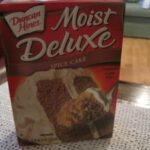Many people espouse a gluten-free diet due to a variety of factors. Having been diagnosed with celiac disease or gluten intolerance indicates that you won’t be able to consume the usual wheat-based foods such as Wonder Bread or Duncan Hines cake any longer. Coming up with suitable gluten-free recipes is a challenge, and some such GF recipes are just plain inedible. The following are a few cookbooks with particular recipes you may wish to sample.
The 125 Best Gluten-Free Recipes by Donna Washburn and Heather Butt
This book, “125 Best Gluten-Free Recipes”, is my newest fave. The Washburn and Butt cookbook, as opposed to others which contain recipes with far too many resemblances to recipes by Hagman, has novel recipe creations that are interesting and practical, requiring a much smaller number of ingredients than the usual GF recipes.
Among my preferences is the “Lavosh”, (p. 16). I choose to leave out the yeast and vinegar (there isn’t any time for proofing at any rate) and use, instead, a 1/2 teaspoon of baking powder as well as replacing water with milk. Next, spreading it out minimally yet not too sparsely, bake the mixture at 375 degrees F. The result will be a bit like pita bread and also somewhat like Native fry bread. Incredible! Altogether it takes less than 45 minutes from mixing bowl to plate! I’ve established this as my new basic bread recipe.
Wheat-Free, Worry-Free: The Art of Happy, Healthy Gluten-Free Living
by Danna Korn
Here you’ll find a no-nonsense, thorough, and uplifting aid to coping with a wheat-free, gluten-free environment. Literally millions of consumers are electing to delete wheat and gluten from their food intake due to medical contraindications, namely celiac disease (aka sprue), inability to tolerate gluten, allergies to wheat products, and autoimmune ailments. Many also are of the opinion that nutritional alternative plans are beneficial in order to lower or eradicate problematic incidents connected with autism, ADD, ADHD and similar conditions. At the same time there are some who also make the choice to eschew wheat or gluten intake based on private motives.
Within this edition is an abundance of complex studies of numerous health problems necessitating life without wheat or gluten. Besides this, there’s exacting dietary information, and an exhaustive, current Products and Services Guide containing contacts for hundreds of suppliers offering merchandise and assistance for those living a wheat-free or gluten-free life. Written with humor in a reader-friendly tone, “Wheat-Free, Worry-Free” is a basic resource for all those vested in maintaining lives of contentment and wellbeing minus gluten.
The Gluten-Free Gourmet – Revised by Bette Hagman.
One terrific book, this includes many of the basic items you’ll find necessary. In the first two chapters, outlining what can or cannot be eaten, you’ll find the book’s true value; however, the recipes are the primary reason for buying it. The “Revised” edition was changed to add “four bean flour” mix.
Gluten-Free Gourmet Makes Dessert by Bette Hagman.
Following my diagnosis, the first two books I found, which I continue using daily, were by Bette Hagman. “Dessert” is among the greatest thanks to the additional knowledge within. Although all of the Hagman books include the GF concoctions, this particular version has a wonderful chart showing the protein, fat, carbohydrate and fiber elements of several of our “funny flours” (p. 26-27). It has a sensational method of determining which flours can be switched should you attempt to raise the amount of protein or fiber percentage in a recipe. As well, there is a demonstration of the means to convert a regular cake recipe into the GF type, plus ideas on the amount of xanthan gum needed (p. 30-31). Finally, a dandy troubleshooting chapter can be found beginning on page 33.


